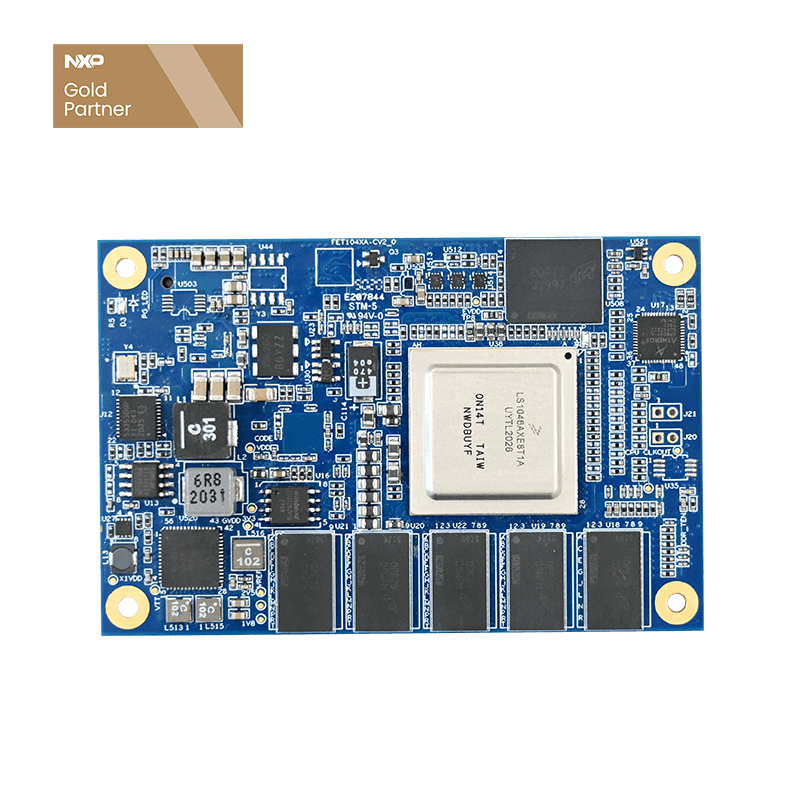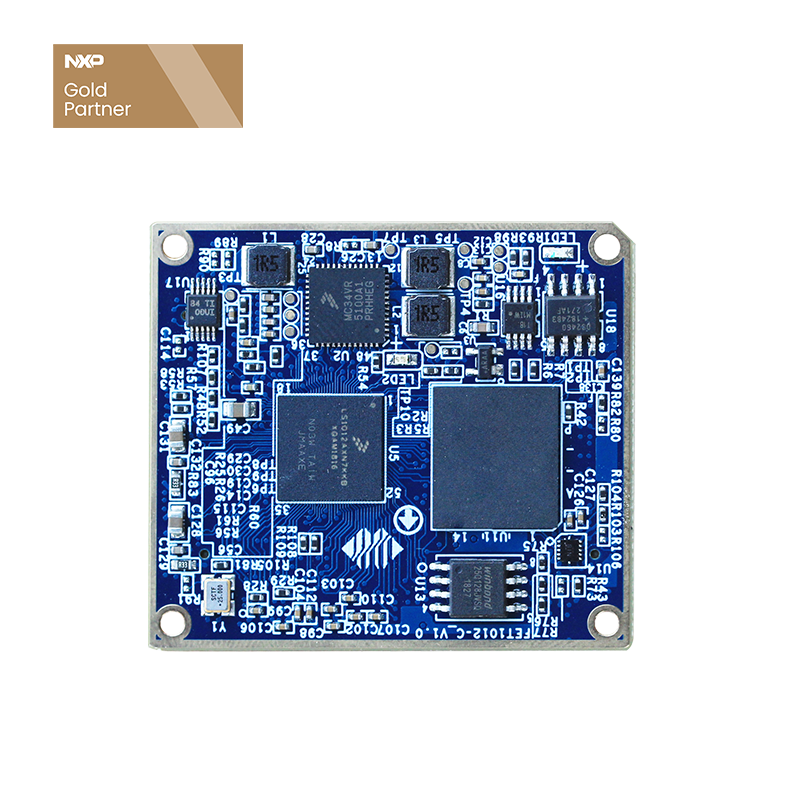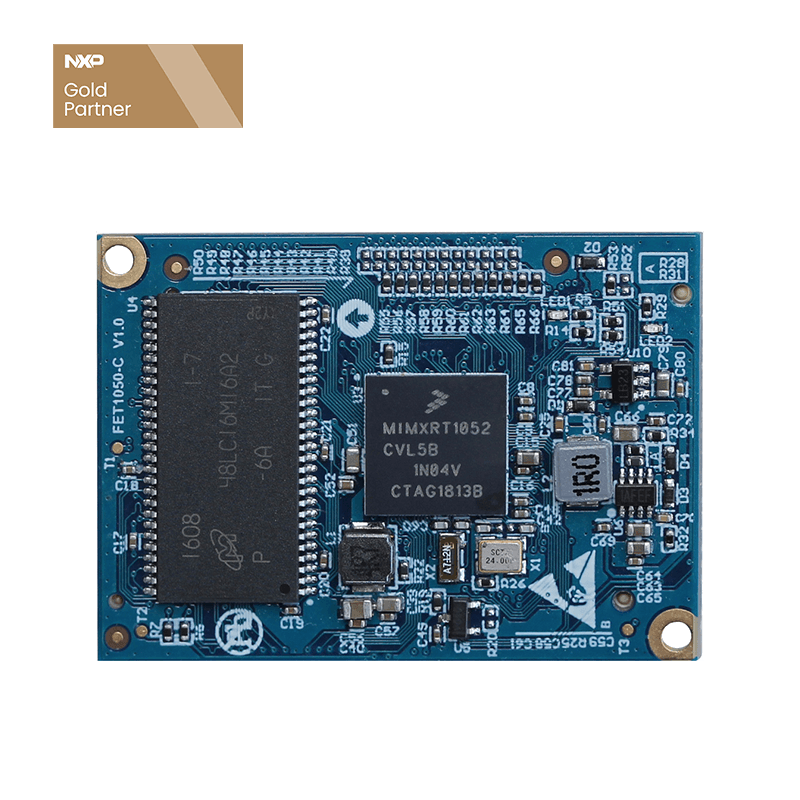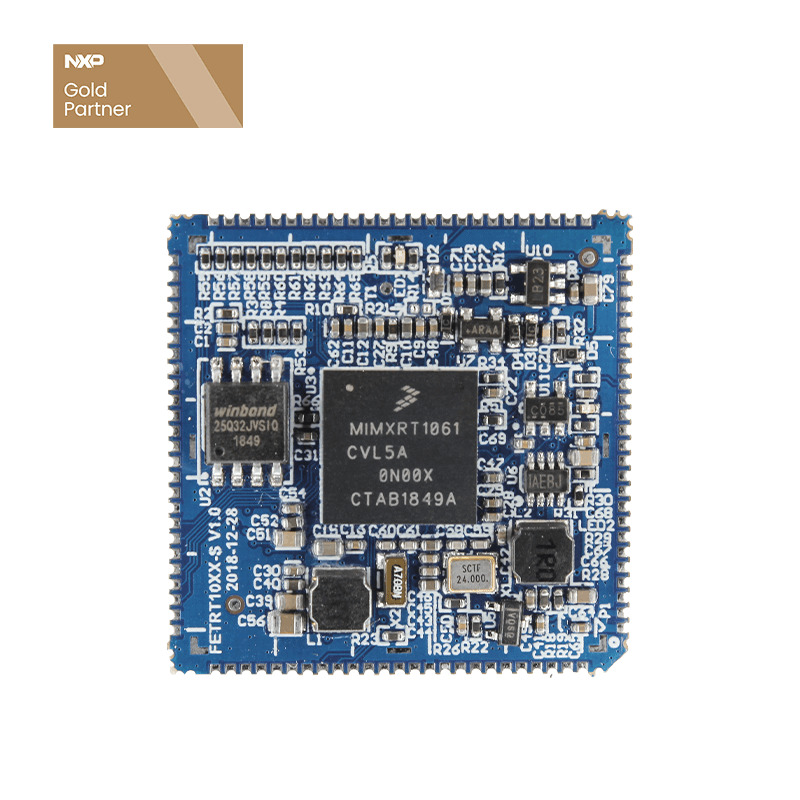
What are the Differences Between ARM System on Module?
What is a system on module(SoM)? The SoM is an electronic motherboard that packs and encapsulates the core functions of the MINI PC. Most of the system on module integrate CPU, storage devices and pins, and are connected to the supporting bottom plate through the pins to realize a system chip in a certain field. The SoM is divided according to the type of platform, mainly according to the type of CPU chip. Now the popular mainstream platforms are ARM and x86.
ARM platform
The three major characteristics of ARM processors are low power consumption and strong functions, 16-bit/32-bit dual instruction sets and many partners. Small size, low power consumption, low cost, high performance; supports Thumb (16-bit)/ARM (32-bit) dual instruction set, which can be well compatible with 8-bit/16-bit devices; uses a large number of registers, and the instruction execution speed is faster; Most data operations are done in registers; the addressing mode is flexible and simple, and the execution efficiency is high; the instruction length is fixed.
X86 platform
The x86 architecture is an important variable instruction length CISC (Complex Instruction Set Computer). Memory accesses with a length of word (word, 4 bytes) allow unaligned memory addresses. Words are stored in the memory in low-order byte first order. Forward compatibility has always been a driving force behind the evolution of the x86 architecture (the need for design dictates this factor and often leads to criticism, especially from advocates and theorists of rival processors for a widely regarded is puzzled by the continued success of poorly designed architectures). But in newer microarchitectures, x86 processors convert x86 instructions into RISC-like microinstructions for execution, resulting in superscalar performance comparable to RISC, while still maintaining forward compatibility.
After introducing the two mainstream platforms, I will introduce the ARM system on module, Cortex-M7, Cortex-A7, Cortex-A8, Cortex-A9, Cortex-A53, and what are the differences between the ARM system on module? The following is an example of several ARM SoM from Forlinx Embedded.
ARM System on Module Cortex-M7 RT1052/RT1061
The i.MX RT1052/i.MX RT1061 processors are part of a brand new family of processors featuring NXP's advanced Arm@Cortex-M7 cores running at speeds up to 528 MHz for high CPU performance and real-time responsiveness. The i.MX RT1061 processor is equipped with 1MB of on-chip RAM. i.MX RT1052 SRAM 512KB, of which 512 KB can be flexibly configured as TCM or general-purpose on-chip RAM, while the other 512 KB is general-purpose on-chip RAM.
Based on Allwinner T3/A40i/T507 quad-core Cortex-A7 system on module
Developed based on Allwinner processor T3/A40i/T507, supports hardware encryption and integrates power management. The processor is quad-core Cortex-A7, 1.2GHz main frequency, integrated GPU Mali400MP2, strictly industrial grade. Support 8 serial ports, dual network ports, digital cameras, analog cameras, LVDS, HDMI, MIPI, video hardware codec, SATA and other rich functions; suitable for automotive, power, medical, industrial control, Internet of Things, environmental protection, smart terminals and other fields.
ARM system on module AM335x (Cortex-A8)
AM335x series SoM adopts TI AM335x processor, supports up to 1GHz frequency, integrates 6 serial ports, 2 CAN bus interfaces, 2 Fast Ethernet interfaces, 2 USB interfaces, supports 2D/3D graphics acceleration, suitable for industrial automation Control, medical, electric power, transportation, environmental protection and other industrial applications. The module integrates two 10M/100M adaptive Ethernet interfaces, supports 4-way network port expansion, and optionally supports Gigabit Ethernet ports. The module hardware supports up to 6 serial ports (all of which can be configured as conventional serial ports), and provides RS-232, RS-485, RS-422 drivers and hardware interface protection solutions. The SoM supports 2 CAN-bus interfaces at the same time, which is suitable for power, coal mine, transportation, industrial control, intelligent control and other applications.
ARM system on module i.MX6Q (quad-core or dual-core Cortex-A9)
i.MX6Q quad-core Gigabit Ethernet supports dual-core/quad-core Cortex-A9 processors, supports CAN, 100M Ethernet, Gigabit Ethernet, PCle, serial ports, and supports dual-channel LVDS, RGB, HDMI, MIPI DSI, MPICSI and other multimedia interfaces, support 108OP high-definition video encoding and decoding (hardware), 2D/3D encoding and decoding, support SATA interface, SD card interface, onboard large-capacity eMMC storage, etc., suitable for the development and application of various gateways, collectors, and controllers.
i.MX6Q high-performance industrial gateway module, developed based on NXP (formerly freescale) i.MX6 CPU, onboard 1~2GB memory, 8~32GB storage, supports Linux, Andriod, integrated hardware encryption to protect user application software copyright.
Cortex-A53+M4 Heterogeneous Multicore Industrial System on Module (i.MX8M Series)
Based on NXP i.MX8M Mini quad-core 64-bit processor design, the main frequency is up to 1.8GHz, ARMCortex-A53 architecture, integrated 2GB or 4GB LPDDR4; The CPU adopts advanced 14nm process, provides more efficient power management, and supports fanless design. It is suitable for applications such as image recognition, audio and video processing, Internet of Vehicles, Internet of Things, advertising multimedia, smart cities, industrial control and human-computer interaction.
Cortex-A53 Heterogeneous Multi-core System on Module (i.MX8M Plus)
Based on NXP (Freescale) i.MX8M series Cortex-A53 high-performance processor design, support hardware encryption, support camera interface, H.265 video hardware codec, USB3.0 interface, HDMI/MIPI, PCle, Gigabit Ethernet interface, multiple serial ports, etc.
The i.MX8M Plus operates at a maximum speed of 2.3 TOPS, supports 2x ISP, 2x camera inputs, as well as 3D/2D graphics acceleration and multiple audio and voice functions. Widely used in human-computer interaction HMI, medical inspection, drones, machine vision inspection, avionics, automotive multimedia, etc.
Cortex-A72+ Cortex-A53 Industrial grade ARM System on Module
Based on Rockchip RK3399 processor design, it supports Linux/Android system. Integrated 2 1.8GHz, Cortex-A72 cores, 4 1.4GHz ARM Cortex-A53 cores, 64-bit system, comparable to desktop computer processing performance; integrated LPDDR4, memory supports 4GB, 8GB or higher; suitable for AI, VR, streaming High-performance applications such as media processing and servers.
ARM System on Module i.MX6ULL (Cortex-A7)
The i.MX6ULL SoM is designed with NXP (formerly Freescale) Cortex-A7 processor, supports 2 network ports, and supports up to 8 serial ports; integrated serial port, network port, USB, CAN-Bus, IO, LCD display, SPI, IIC And other interfaces, suitable for medical, electric power, coal mine, communication and industrial automation control and other fields.





